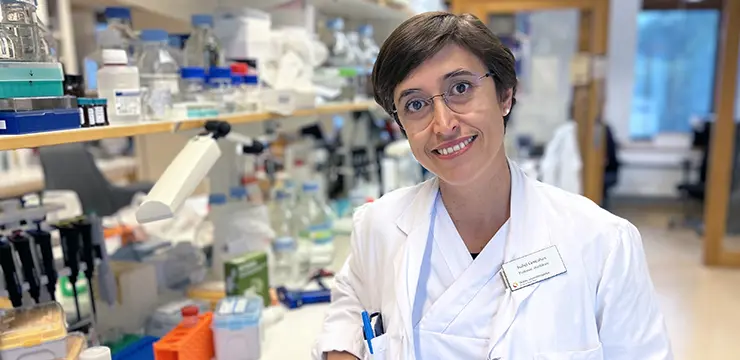3 million SEK awarded to develop new method for early detection of heart attack and stroke risk

The leading underlying cause of heart attacks is atherosclerosis—characterised by the formation of atherosclerotic plaques in the arteries. When these plaques rupture, they can form blood clots that obstruct blood flow, potentially triggering a heart attack or stroke, depending on the affected arterial territory. A major challenge for healthcare providers is to identify individuals at-risk before such life-threatening events occur.
“We could save many lives if we could predict better who is at risk,” says Isabel Goncalves, Senior Consultant in Cardiology at Skåne University Hospital and Professor at Lund University’s Diabetes Centre.
Plaque composition: The critical factor
Together with Tobias Erlöv and Magnus Cinthio from Lund University’s Faculty of Engineering (LTH), Goncalves is developing a novel method using ultrasound technology to assess the composition of atherosclerotic plaques. The risk posed by plaques is not solely determined by their size—how they are composed is crucial. Plaques that are more inflamed present a higher risk of rupture.
“Current ultrasound technology can only show us the size of a plaque, not whether its composition is ‘dangerous’ or ‘harmless.’ As we do not have good tools to assess the risk accurately, we sometimes perform unnecessary surgeries or under-treat patients who are at serious risk,” explains Goncalves.
Safer and more accessible than existing techniques
Currently, more demanding and expensive techniques such as MRI and CT scans are used in research to evaluate plaque composition. However, these methods are not routinely applied in clinical settings due to their high costs, the need for contrast agents, and, in the case of CT scans, the exposure to ionizing radiation.
Goncalves and her team have developed an advanced ultrasound algorithm that allows a much more detailed analysis of plaque composition. This method is being tested in three separate studies, including one involving patients at Skåne University Hospital in Malmö. The next step for the research group is to launch a study in the United States. They have also recently founded a spin-off company to commercialise their findings.
The research initiative has garnered significant support, including the 3 million SEK grant from Swelife, a strategic innovation programme funded by the Swedish government via Vinnova.
“Our ultimate goal is to develop a method that meets all regulatory standards and is feasible for widespread clinical use. Ultrasound is a relatively affordable, portable, risk-free and non-invasive technology, making it an ideal tool for early use in various healthcare settings, including primary care,” says Goncalves.
Reducing suffering and improving lives
In her daily work as a cardiologist, Goncalves treats patients who have already experienced heart attacks or strokes or are known to be at high risk for cardiovascular disease.
“As a cardiologist, I wish my expertise was not needed. If we could identify more people before they become seriously ill, we could help them make lifestyle changes, live longer, and most importantly, live healthier, fuller lives,” she says.
Swelife, which awarded the funding, is a national strategic innovation programme supported by Vinnova and participating partners, aimed at promoting sustainable health solutions.
Quick facts: Atherosclerosis and cardiovascular disease
- Plaque: Atherosclerosis refers to the accumulation of cholesterol deposits in the arterial walls, leading to the formation of plaques.
- Risk: Plaques can restrict blood flow, leading to angina (chest pain) and increasing the risk of heart attack or stroke if they rupture.
- Prevalence: The SCAPIS study revealed that 40% of Swedes aged 50–64 have visible plaques in their coronary arteries.
For more information, visit the Swedish Heart-Lung Foundation (website in Swedish)

